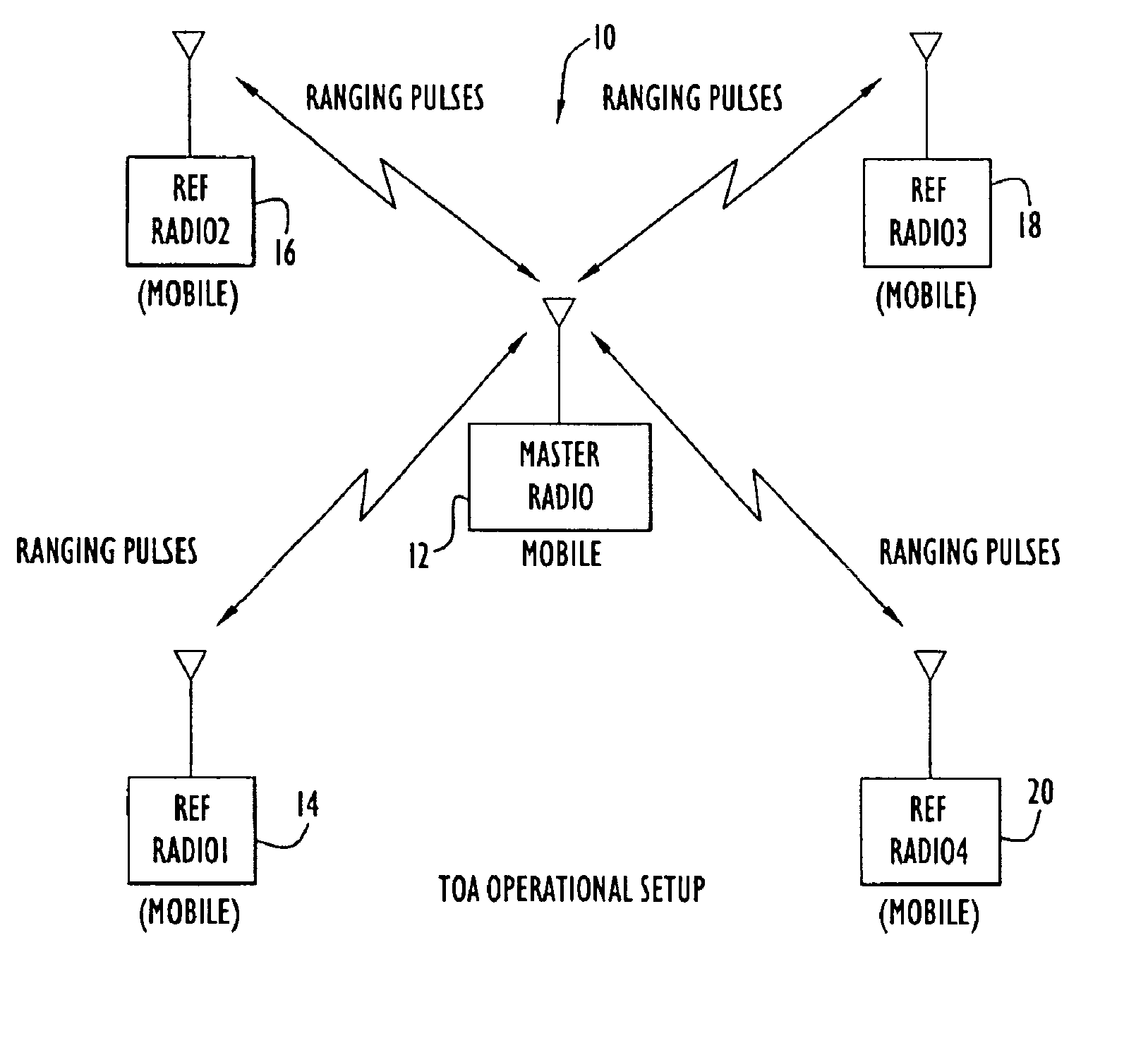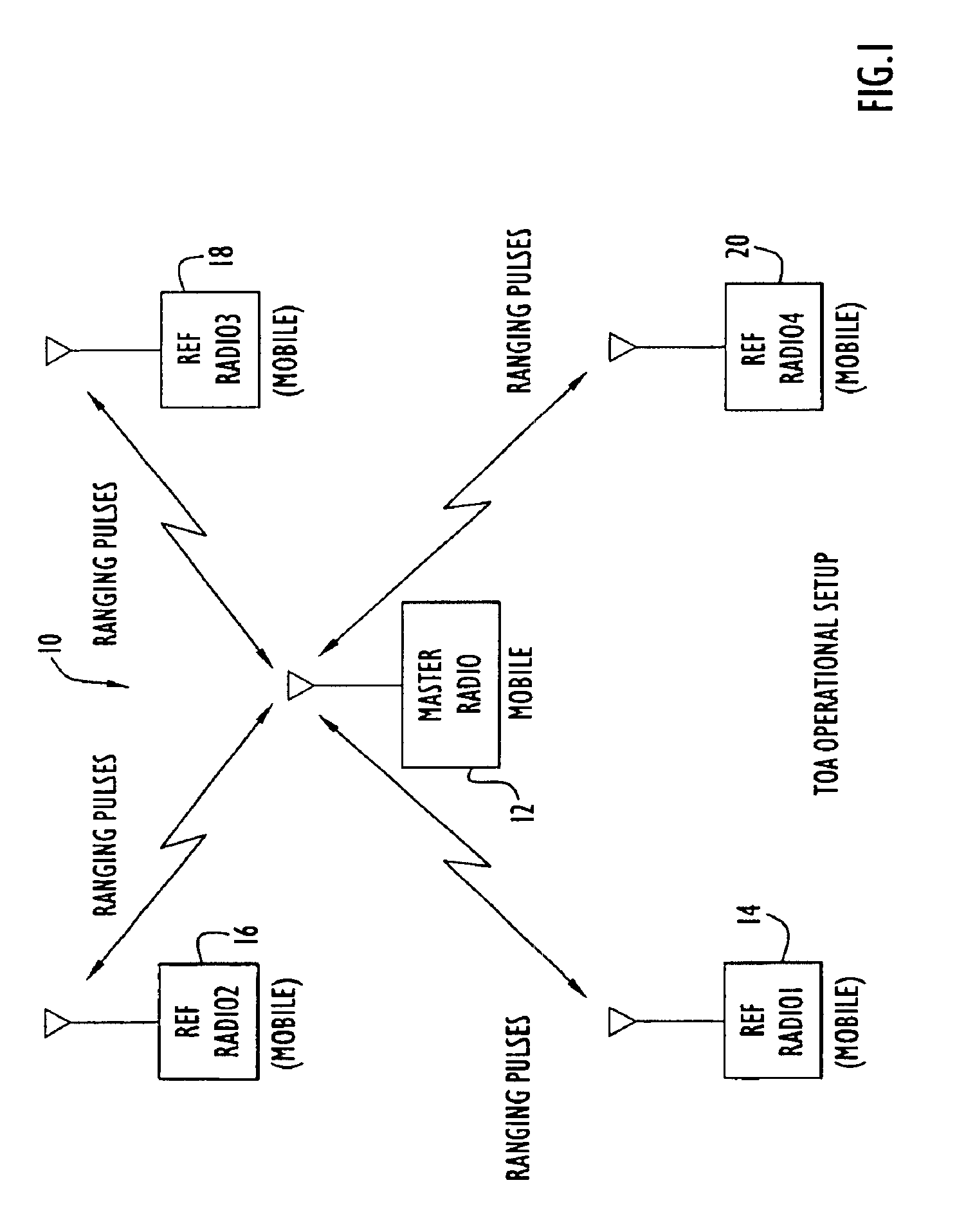Method and apparatus for high-accuracy position location using search mode ranging techniques
a high-accuracy, position-based technology, applied in direction finders using radio waves, instruments, wireless communication, etc., can solve the problems of inability to ensure the success of “physically locating” a target communication device, inability to automatically determine the location of conventional cellular telephones, and inability to provide assistance, so as to improve the capability of existing position-based estimation systems
- Summary
- Abstract
- Description
- Claims
- Application Information
AI Technical Summary
Benefits of technology
Problems solved by technology
Method used
Image
Examples
Embodiment Construction
In accordance with the present invention, a handheld or portable communication device that provides accurate and reliable range information to an identical, or similar, device, within milliseconds, without interruption of audio, video or data communications. Using spread spectrum waveforms and processing techniques, the present invention is capable of determining highly accurate range information in a severe multipath environment. This range information allows the handheld or portable device to “home in” upon a designated target device.
In particular, a two-way time-of-arrival messaging scheme is employed to achieve the aforementioned objectives, while eliminating the need for highly accurate system clocks required in conventional time-synchronized systems. By performing internal delay calibration, Doppler compensation, frequency diversity and leading-edge-of-the-signal curve fitting, a highly accurate estimate of ranging signal time of airival can be obtained, ensuring the accuracy ...
PUM
 Login to View More
Login to View More Abstract
Description
Claims
Application Information
 Login to View More
Login to View More - R&D
- Intellectual Property
- Life Sciences
- Materials
- Tech Scout
- Unparalleled Data Quality
- Higher Quality Content
- 60% Fewer Hallucinations
Browse by: Latest US Patents, China's latest patents, Technical Efficacy Thesaurus, Application Domain, Technology Topic, Popular Technical Reports.
© 2025 PatSnap. All rights reserved.Legal|Privacy policy|Modern Slavery Act Transparency Statement|Sitemap|About US| Contact US: help@patsnap.com



